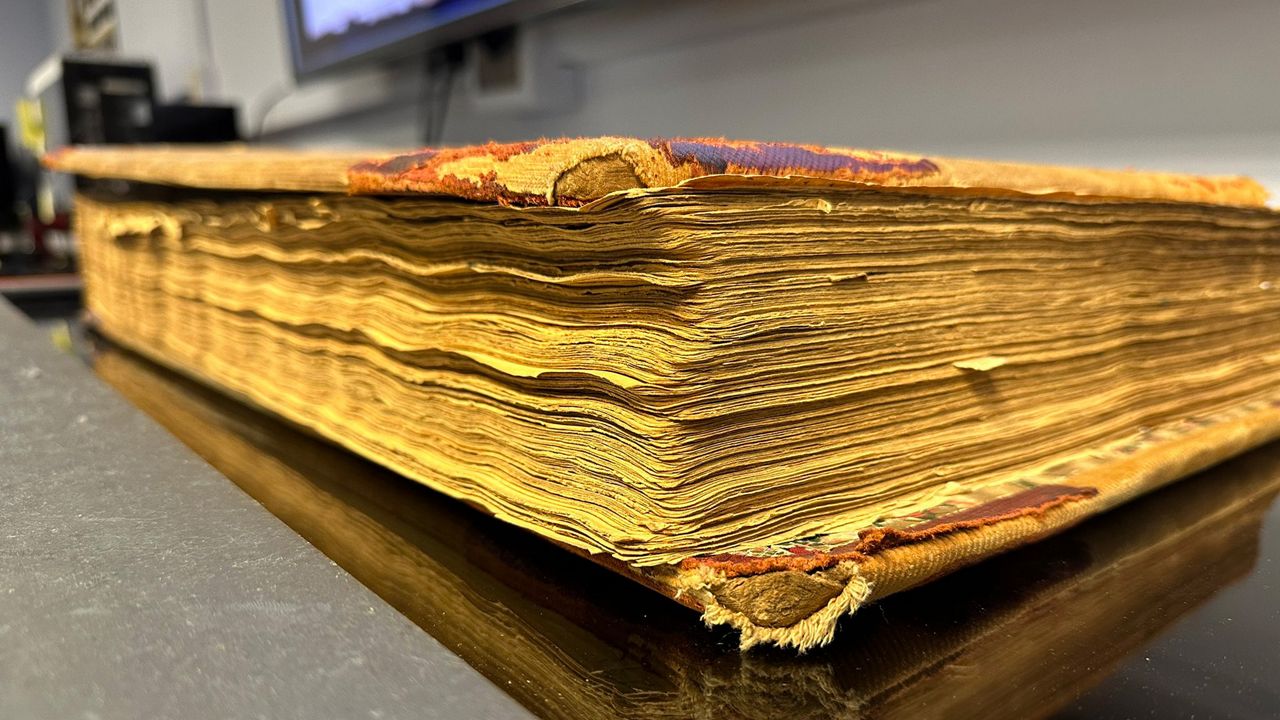TAMPA, Fla. — The latest technology helped a team at the University of South Florida's Institute for Digital Exploration take a deep dive into history. They spent six months digitizing more than 100 years of documents and other items for the Hillsborough County Sheriff's Office.
"I was shocked, first of all, by the incredible amount of information that we found in this collection," said Dr. Davide Tanasi, the institute's director. "I think this is the first experience that I had where I can use the digital scholarship that I have built up to generate a significant amount of knowledge for the community, because there's really so many community stories in it."
Tanasi said 80,000 items, including jail ledgers, photographs, and newspaper clippings were photographed and scanned to be catalogued in a digital database. Some of the records are in books that have hundreds of pages. The size of the project wasn't the only challenge. Some of the pieces date back to the 1890s. Compared to that, a scrapbook from the 1980s that first year master's student Sarah Hassam photographed recently is practically brand new.
"The only thing that's keeping the adhesive of the cellophane tape together was the pressure between the pages," Hassam said of the tape holding newspaper clippings in the book. "So, as soon as you start opening the book, that adhesive is no longer attached."
Once in the database, Tanasi said documents can be searched by key words, meaning HCSO members won't have to flip through countless pages to find information.
"Each time that you flip it, you're going to damage it. Our goal is for them to not be touched by anybody any more. If they want it, there's the digital file," Tanasi said.

It doesn't stop at documents. Everything from old equipment to badges to uniforms got the digital treatment. Third year undergrad student Aiden Eylward demonstrated how that's done, moving a structured light scanner, a tool that looks like a clothing iron with flashing lights, around an old walkie talkie.
"It's measuring how that pattern is disrupted, and it's able to build the 3D model from that," Eylward said.
A scan of the object is created that can be viewed on a computer.
"They are a three-dimensional record of objects, which may disappear soon due to the simple passage of time," Tanasi said. "These objects are also of crucial interest because they can be used for public outreach activities."
Tanasi said the project is the first to show how effective digital curation can be to archive materials when dealing with such a large collection.
"This collaboration marks a critical step forward in securing the history of the Hillsborough County Sheriff's Office," Sheriff Chad Chronister said in a statement. "By digitizing our historical records, we safeguard valuable information and details about those who served this community. This improved access to data may even enhance our investigative capabilities, potentially opening doors in cold cases and bringing closure to families. This project is not just about efficiency; it's about delivering justice and ensuring a safer future for all."
Tanasi said his team is making their final presentation of the digital database to HCSO command staff next week.



